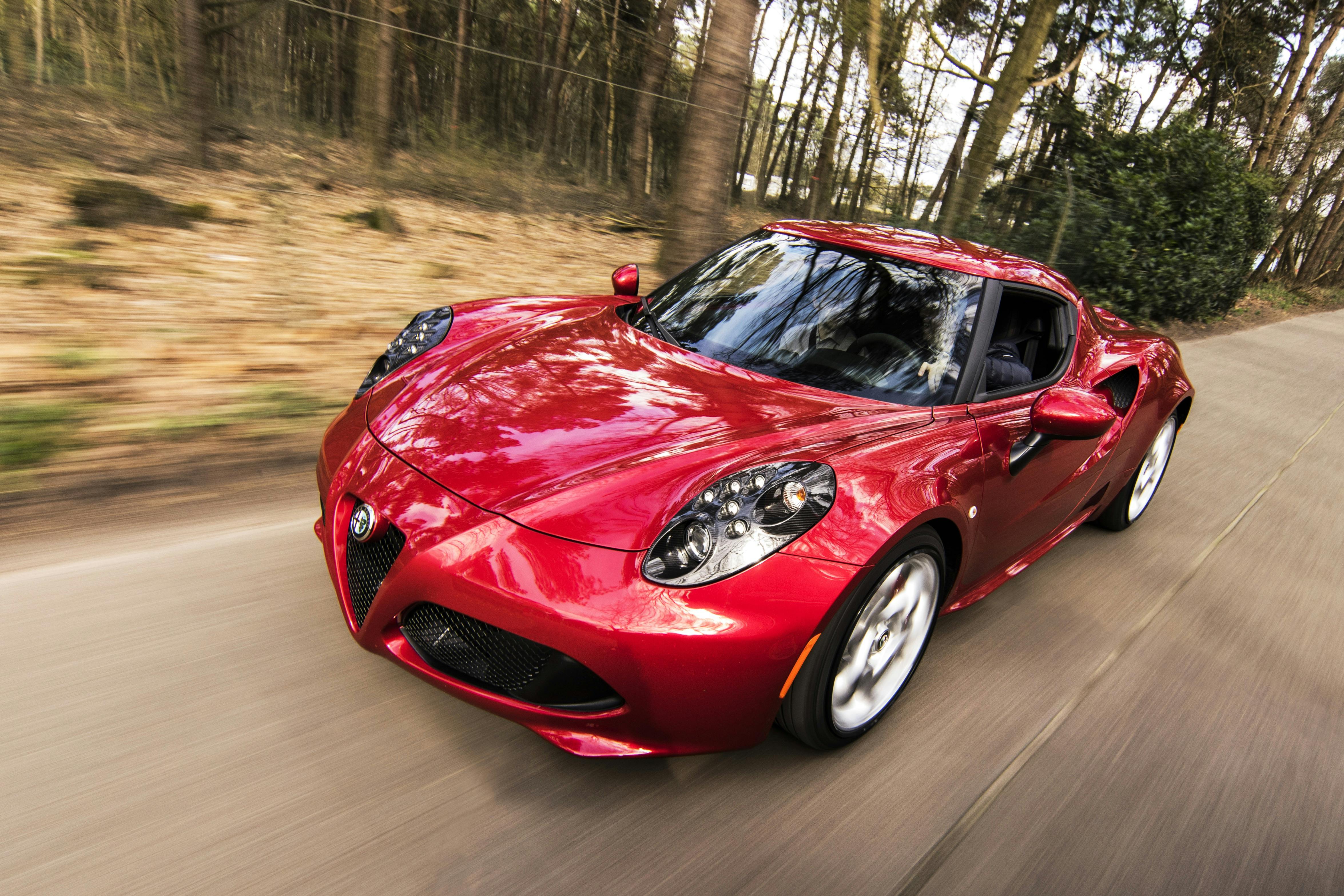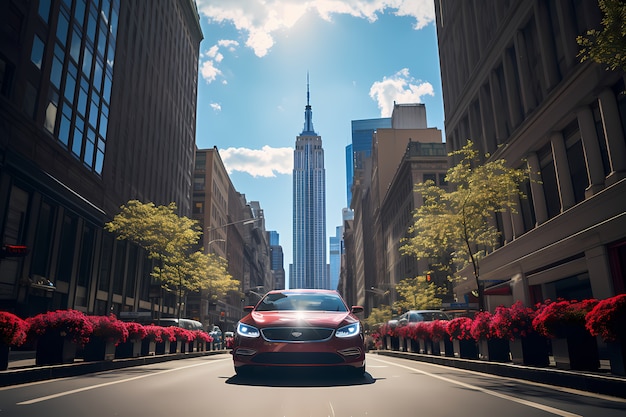
Introduction :
In an era where environmental concerns and traffic congestion are on the rise, finding innovative solutions for urban transportation has become crucial. Smart cars have emerged as a promising answer to these challenges. With their compact size, fuel efficiency, and advanced features, smart cars are transforming the way we navigate cities. In this article, we will explore the evolution of smart cars, their benefits, and their potential impact on urban living. Join us as we delve into the world of smart cars and discover why they are poised to shape the future of urban transportation.The Rise of Smart Cars : The concept of smart cars originated in the late 1980s when Swatch, the Swiss watch manufacturer, joined forces with Mercedes-Benz, the renowned automobile brand. Their partnership aimed to create a compact, efficient, and environmentally friendly vehicle that would revolutionize urban mobility. The result was the birth of the Smart brand, with the first Smart car hitting the market in 1998. Since then, smart cars have gained popularity worldwide, particularly in densely populated urban areas.
Compact Design and Maneuverability: One of the defining characteristics of smart cars is their compact size. With their small footprint, smart cars are perfectly suited for navigating narrow city streets and squeezing into tight parking spaces. Their agility and maneuverability make them ideal for urban environments, where parking is often a challenge. Additionally, their small size allows for easier lane changes and reduces the impact of traffic congestion, making for a smoother driving experience.
Fuel Efficiency and Environmental Sustainability: Smart cars are known for their exceptional fuel efficiency, making them an eco-friendly choice for urban dwellers. Their lightweight construction, aerodynamic design, and advanced engine technology contribute to reduced fuel consumption and lower emissions. In recent years, smart car manufacturers have also introduced electric and hybrid models, further reducing their environmental impact. By opting for a smart car, drivers can actively contribute to a greener and more sustainable urban environment.
Safety and Innovative Features : Contrary to their small size, smart cars prioritize safety. These vehicles incorporate advanced safety features such as multiple airbags, electronic stability control, and collision avoidance systems. Additionally, smart cars are equipped with cutting-edge technology, including touchscreen infotainment systems, voice command capabilities, and connectivity options. These innovative features enhance the driving experience while ensuring safety on the road.
Smart Cars and Urban Living : Smart cars have a significant impact on urban living. Their compact size and ease of maneuverability contribute to reduced traffic congestion, as they take up less space on the road. Furthermore, smart cars require less parking space, alleviating parking issues in crowded cities. By promoting efficient land use, smart cars help optimize urban infrastructure. Additionally, with their low emissions and fuel efficiency, smart cars contribute to cleaner air and a healthier urban environment.
Conclusion :
Smart cars represent the future of urban transportation. With their compact design, fuel efficiency, and advanced features, they offer a sustainable and efficient solution to the challenges of urban living. As cities continue to grow and face increasing transportation demands, smart cars provide a viable alternative that reduces congestion, improves air quality, and enhances the overall urban experience. Embracing smart cars is a step towards creating smarter, greener, and more livable cities for generations to come..jpg)
Which companies lead in smart car technology?
When it comes to smart car technology, several companies have made significant contributions and advancements. Here are some notable players in the field:
Daimler AG: Daimler AG, the parent company of Mercedes-Benz, is a leader in smart car technology. They partnered with Swatch to create the Smart brand and have been at the forefront of developing compact, efficient, and environmentally friendly vehicles. The Smart brand, known for its compact size and urban mobility, is a product of this collaboration .
Huawei Technologies: Huawei, a Chinese technology company, has been making strides in the smart car industry. They have developed 5G communications hardware for the automotive industry and are working on smart car solutions for vehicle manufacturers. Huawei's ambition to become a key supplier in autonomous driving technology showcases their commitment to the sector .
Waymo: Waymo, a subsidiary of Alphabet Inc. (Google's parent company), is a leader in autonomous vehicle technology. They have made significant advances in the driverless car market and are known for their self-driving technology. Waymo has been conducting extensive testing and has launched autonomous ride-hailing services in select cities.
ZF Friedrichshafen AG: ZF Friedrichshafen AG, a German auto parts manufacturer, entered the autonomous vehicle space in 2015. They have invested in a portfolio of self-driving tech companies and partnered with Nvidia to integrate self-driving platform chipsets into production vehicles. ZF Friedrichshafen AG's expertise lies in developing advanced technologies for autonomous driving .
Baidu: Baidu, a Chinese technology company, is actively involved in autonomous vehicle technology. They have been developing AI cloud services, chatbots, AV technology, and smart devices. Baidu's autonomous vehicle services are already available to the public in select cities, and they continue to innovate in this field .
It's important to note that the smart car industry is dynamic and rapidly evolving, with many companies and startups contributing to its growth. The companies mentioned above are just a few examples of those leading the way in smart car technology.

Are there any upcoming players in the industry?
The smart car industry is constantly evolving, and there are several upcoming players making their mark in the field. Here are a few notable ones:
Tesla: Tesla, led by Elon Musk, has been a major disruptor in the automotive industry. They are known for their electric vehicles (EVs) and have made significant advancements in autonomous driving technology. Tesla's innovative approach to smart car technology has garnered widespread attention and has pushed other automakers to invest in electric and autonomous vehicles.
Rivian: Rivian is an American electric vehicle manufacturer that specializes in producing electric SUVs and pickup trucks. They have gained attention for their advanced battery technology and focus on sustainability. Rivian has received significant investments from companies like Amazon and Ford, indicating their potential to become a major player in the smart car industry.
NIO: NIO is a Chinese electric vehicle manufacturer that has gained popularity for its high-performance electric cars. They have developed advanced battery-swapping technology, allowing for quick and convenient battery replacements. NIO's focus on performance and innovative features has positioned them as a key player in the smart car market.
Lucid Motors: Lucid Motors is an American automotive company that specializes in luxury electric vehicles. They have gained recognition for their high-performance electric sedan, the Lucid Air. With advanced technology and a focus on luxury, Lucid Motors aims to compete with established luxury car brands in the smart car industry.
Byton: Byton is a Chinese electric vehicle startup that focuses on creating smart, connected cars. They have developed advanced infotainment systems and driver-assistance features, including a large touchscreen display integrated into the dashboard. Byton's emphasis on connectivity and technology sets them apart in the smart car market.
It's important to note that the smart car industry is highly competitive and subject to rapid changes. While these companies show promise, the landscape can shift quickly with the emergence of new players and advancements in technology.






